![]()
Apple has announced the latest iteration of their flagship phone. The new iPhone will come in two sizes (like its recent predecessors), feature largely the same physical design, but host a few important changes. Apple touts better cameras, battery life, display brightness, stereo sound and water/dust resistance as key benefits of the new iPhone. We will take a look at these improvements, and other changes that have garnered less than enthusiastic feedback from fans.
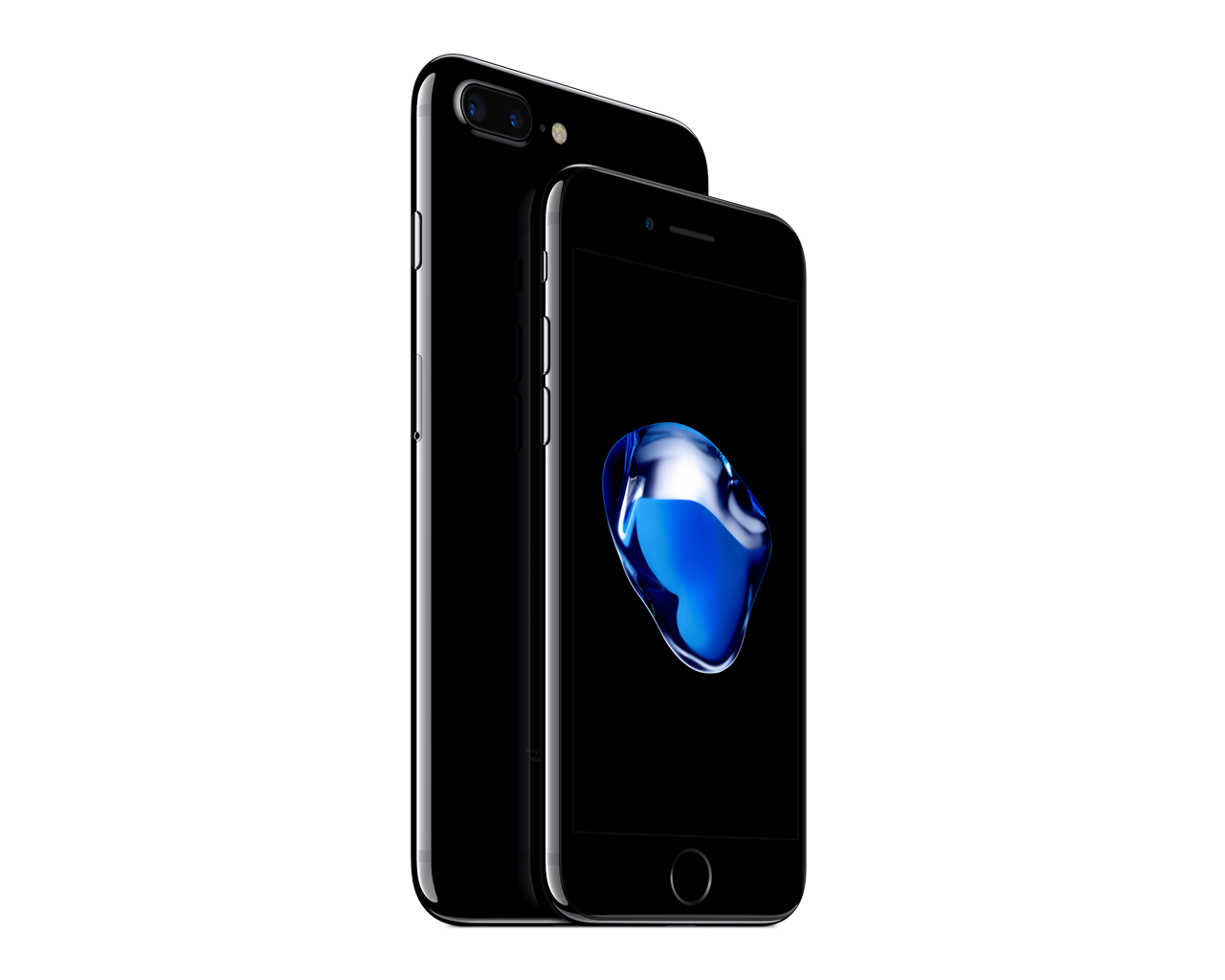
The iPhone 7 and iPhone 7 Plus are nearly identical physically to the iPhone 6/6 Plus and iPhone 6s/6s Plus. This is a surprise for many who have followed previous iPhone updates. In the past, each generation of iPhone that received a new number (i.e. 4, 5, 6, etc.) typically saw a major physical design change, with “s models” (i.e. 4s, 5s, 6s) acting like .5 model upgrades—basically, cameras and processors may receive internal upgrades, but physically the phones appear the same. Not so with the iPhone 7 and iPhone 7 Plus.
![]()
Design
![]()
The iPhone 7 sports a 4.7-inch Retina HD display, rounded edges, and a sleep-wake button on the side opposite the volume controls, all identical (as far as we can tell) to the previous iPhone 6s (2015) and iPhone 6 (2014) models. So what’s new?
The iPhone 7 has a new display that is said to be up to 25% brighter than previous models and have a higher color range. The camera bulge introduced in the iPhone 6 has been better incorporated into the body (though not removed). The camera is accompanied by not one, not two, but a four LED flash for better skin tones in photos. The Home Button is no longer a button but is a pressure sensitive area with Taptic Engine feedback to simulate a press. Though still present along the top and bottom of the case, the antenna lines no longer stretch across the back of the phone, minimizing their infamous visual presence. The new colors are said to hide these antenna lines almost entirely.
The two new colors joining Silver, Gold and Rose Gold for the iPhone 7 are: Black—replacing Space Gray—and Jet Black. Black is the same bead-blasted aluminum texture, just a lot darker. The color that has people talking is the new Jet Black. Jet Black is a high-gloss, sleek finish giving the phone the feel of a continuous, seamless surface. Jony Ive goes on at length about the obsessive, painstaking polishing method developed to get Jet Black so glossy. It is so smooth that despite a new protective coating, Apple actually has a disclaimer warning users that it will show scratches and scuffs. Do we still even want a Jet Black iPhone if it is easy to scratch? Yes, yes we do.
And last—but certainly not least—there is no 3.5mm, auxiliary headphone jack (more on this later).
![]()
The iPhone 7 Plus similarly has the same size 5.5-inch Retina HD display as its predecessors, same rounded edge design, same side-located sleep-wake button—basically they are identical at first glance. Unless, of course, you happen to catch sight of the camera. The dual camera in the new iPhone 7 Plus is the most noticeable change to the physical makeup of these new phones. Set side by side, the dual cameras are reminiscent of past gimmicks of rival phones, which begs the question, “Is a dual-camera necessary?”
Camera
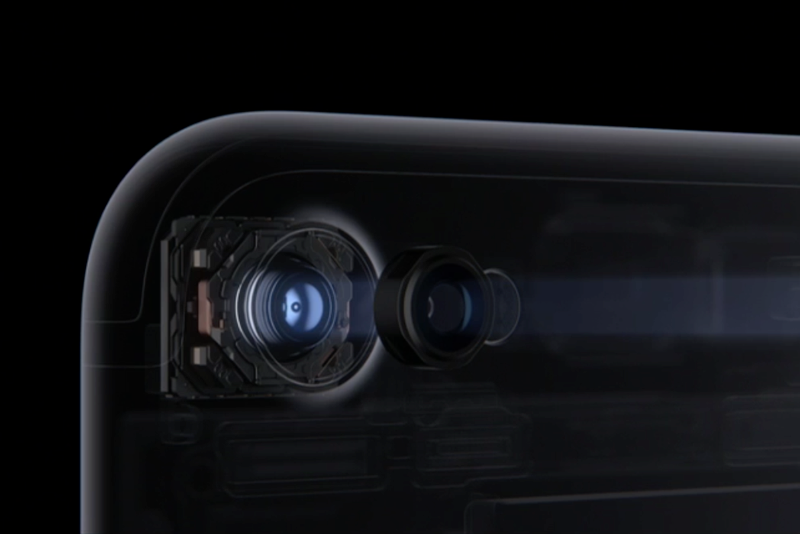
The iPhone 7 and iPhone 7 Plus have 12MP cameras like the iPhone 6s/6s Plus. Like previous phones, these cameras offer great 4k video recording, slo-mo, time-lapse and panorama modes, Live Photos, face detection, and lots more features. Unlike their predecessors, they have a quad-LED True Tone flash, image stabilization on both the iPhone 7 and iPhone 7 Plus (instead of just the Plus), and a wider ƒ/1.8 apertures—versus the ƒ/2.2 of the 6s/6s Plus—for more professional looking photos (for an explanation of why photos look more “professional”, ask a photographer or check out this article on Fstoppers). That is not all for the iPhone 7 Plus.
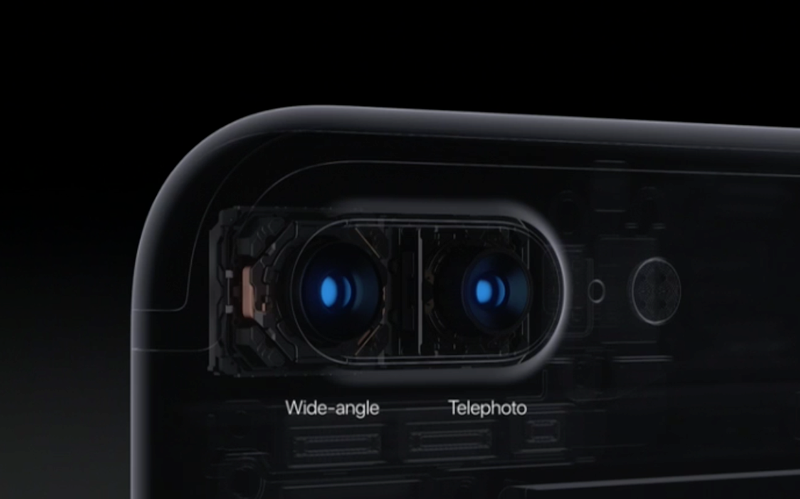 The dual camera system of the iPhone 7 Plus is made up of one Wide-Angle (28mm, ƒ/1.8 aperture) camera and one Telephoto (56mm, ƒ/2.8 aperture) camera. Apple showed off some amazing looking photos during the announcement keynote captured with the iPhone 7 Plus dual-camera system. In cooperation with new software, these cameras not only allow for 2x optical zoom (10x digital zoom) but also intelligently mimics shallow depth of field not seen previously on iPhone. This feature will be called Portrait and will be available later this year, meaning it will not ship with the new iPhone 7 Plus.
The dual camera system of the iPhone 7 Plus is made up of one Wide-Angle (28mm, ƒ/1.8 aperture) camera and one Telephoto (56mm, ƒ/2.8 aperture) camera. Apple showed off some amazing looking photos during the announcement keynote captured with the iPhone 7 Plus dual-camera system. In cooperation with new software, these cameras not only allow for 2x optical zoom (10x digital zoom) but also intelligently mimics shallow depth of field not seen previously on iPhone. This feature will be called Portrait and will be available later this year, meaning it will not ship with the new iPhone 7 Plus.
Home Button
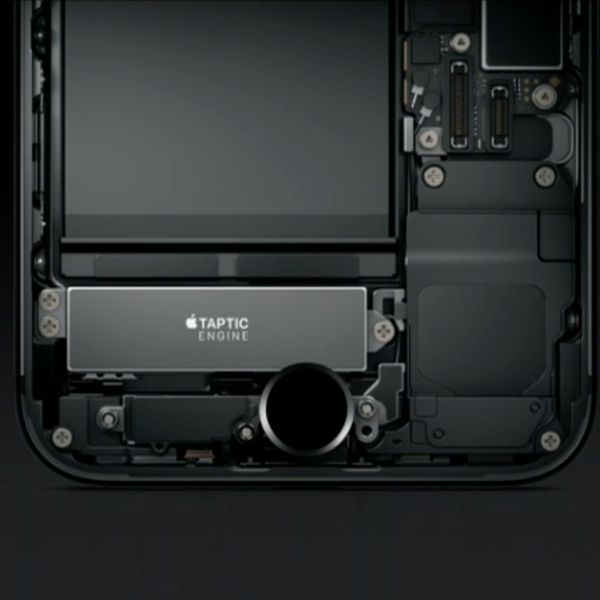
Just like other pressure sensitive hardware from Apple, including Force Touch Trackpads on MacBook and MacBook Pro, along with Apple Watch and 3D touch iPhone 6s/6s Plus screens, the Home Button recognizes the pressure of a push and responds with a small vibration that simulates the click of a button. Sometimes with is more convincing than others; if you press the Trackpad on a MacBook, you’ll swear it’s clicking, on an iPhone 6s a press on a 3D Touch element vibrates, but doesn’t feel like a button. More importantly, the absence of a physical button mechanism means less hardware to wear out and fail and it helps (I imagine) with water resistance. More features will utilize this Taptic feedback, like dropping down the notification screen, to give users a more tactile experience. Developers will hopefully begin to integrate Taptic feedback in the not-so-distant future for a richer app experience.
Power
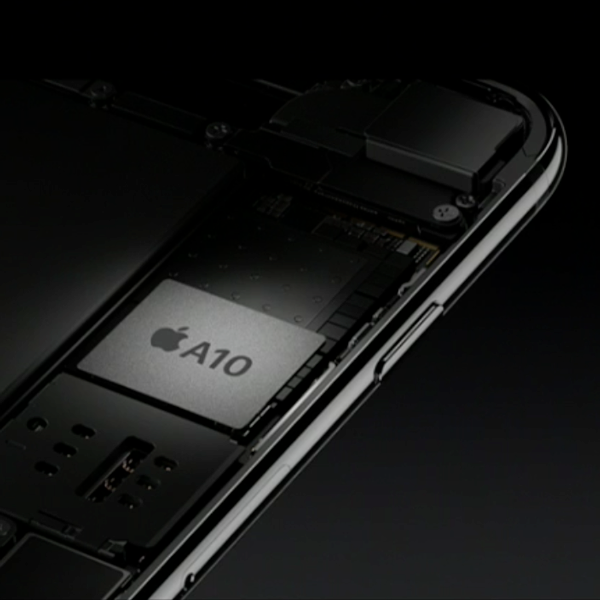
Apple’s new A10 Fusion chip is both more powerful and more efficient. Described as a 64-bit, 4-core processor, the A10 is comprised of two high performance cores and two high-efficiency cores. The high performance cores are 40% faster than the A9 chip (iPhone 6s/6s Plus) and 2x faster than the A8 (iPhone 6/6 Plus). Graphic performance is 50% faster than the A9 and 3x faster than the A8 chip, but only uses ⅔ the power of the A9 and ½ the power of the A8! The high-efficiency cores use just ⅕ the power. So if you are using an app that does not require high performance, like checking your email, you will use significantly less battery power. In summary, Phil Schiller states, “A10 Fusion is the most powerful chip ever in a smartphone.”
Water Resistant
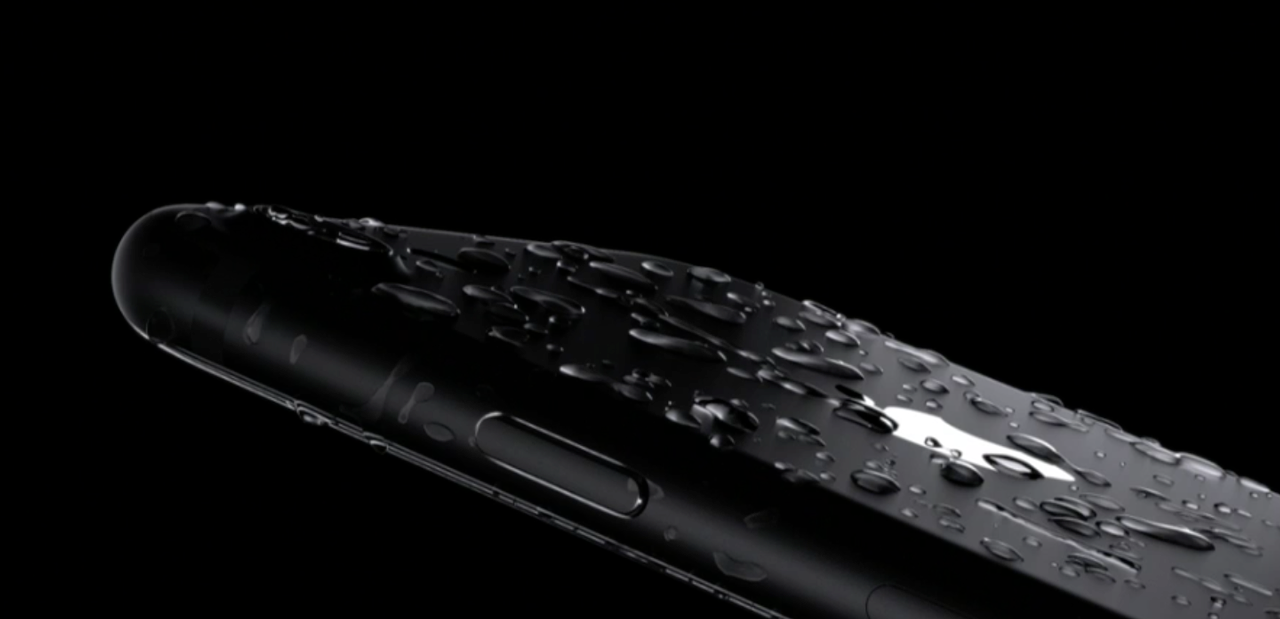
The iPhone 7 enclosure water and dust resistant. Apple cites the iPhone 7 as IP67 resistant, which stands for Ingress Protection (IP) fully against dust (0-6 scale, with 6 being total protection) and against water up to 1m (0-8 scale, with 7 being 15cm-1m of immersion protection). Though you probably shouldn’t swim with your new iPhone 7, it is protected against rain, splashes and most everyday use. Note: Apple does insist you let it dry before charging it.
Stereo Speakers
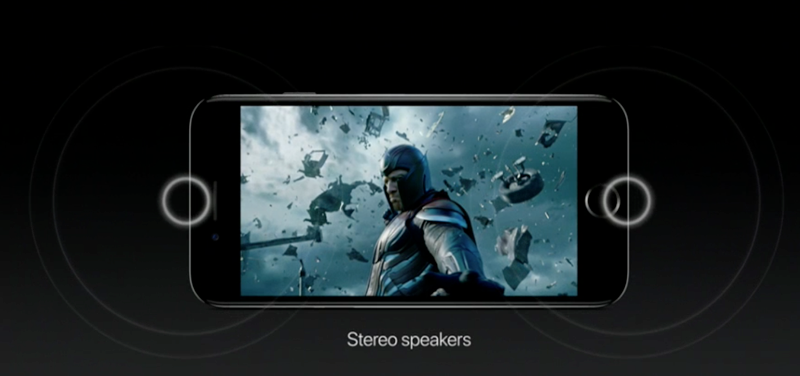
Apple has added stereo audio to the iPhone 7 and iPhone 7 Plus. Unlike the iPad Pro, which contains speakers on both the top and bottom of the device, it appears the iPhone 7 utilizes the earpiece of the phone to augment its existing speakers to deliver the stereo experience. Audio will be 2x louder, and have a higher dynamic range from previous models. We are interested to experience the difference in audio; though you may never watch movies on your phone (maybe just never without headphones) frequent listeners of music, audiobooks and podcasts through their iPhone speakers will tell you there is room for improvement.
Headphones
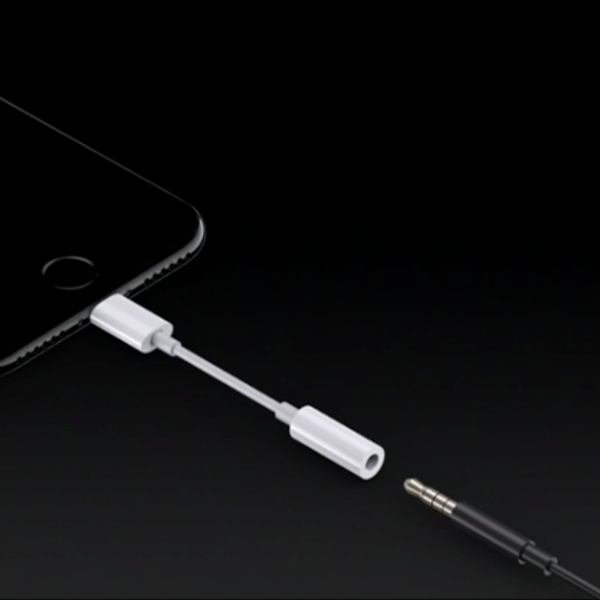 No audio jack. All the news seems to be able to talk about is the absence of the iPhone 7 audio jack—and how Phil Schiller describes the choice to remove it as “courageous.” In the box, the iPhone 7 will ship with a pair of Lightning EarPods; they look the same as traditional Apple EarPods, but they plug into the Lightning port. The box will also have a Lightning to 3.5mm dongle for use with existing headphones. Phil tried to justify the move away from the headphone jack by describing how the headphone jack was a century old, and how they needed the space inside the phone for more battery and other stuff we wanted. And I agree; the headphone jack is old. My only complaint (having not yet been inconvenienced by the absence of the headphone jack) is the fact that Apple didn’t simply say, “It’s time to go wireless.” AirPods aside, they basically confirmed with the Lightning EarPods and adapter dongle that we still need wired headphones, just not a dedicated headphone jack. The move away from the headphone jack feels like a half-step: big inconvenience by removing it, while only partially committed to the future by not including wireless headphones.
No audio jack. All the news seems to be able to talk about is the absence of the iPhone 7 audio jack—and how Phil Schiller describes the choice to remove it as “courageous.” In the box, the iPhone 7 will ship with a pair of Lightning EarPods; they look the same as traditional Apple EarPods, but they plug into the Lightning port. The box will also have a Lightning to 3.5mm dongle for use with existing headphones. Phil tried to justify the move away from the headphone jack by describing how the headphone jack was a century old, and how they needed the space inside the phone for more battery and other stuff we wanted. And I agree; the headphone jack is old. My only complaint (having not yet been inconvenienced by the absence of the headphone jack) is the fact that Apple didn’t simply say, “It’s time to go wireless.” AirPods aside, they basically confirmed with the Lightning EarPods and adapter dongle that we still need wired headphones, just not a dedicated headphone jack. The move away from the headphone jack feels like a half-step: big inconvenience by removing it, while only partially committed to the future by not including wireless headphones.
![]()
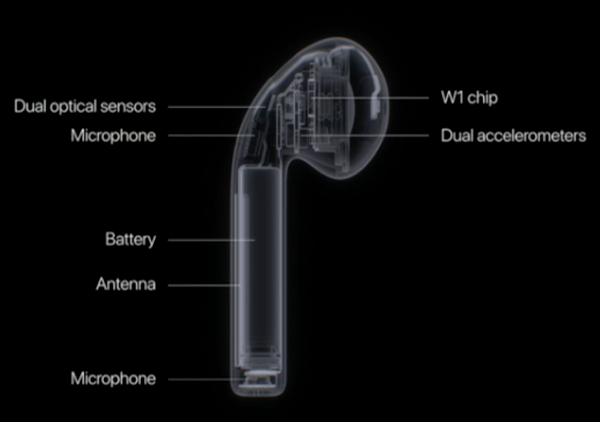 So what about wireless headphones? Apple made some, and they look pretty cool. Physically, they look like they would fall out of your ear and get lost as soon as you stopped holding them. But the AirPods are forward looking and courageous. They are expensive, delicate looking, impossibly high-tech internally, and different from anything out there. They come in a wireless charging case that extends their battery from 5 hours (AirPod battery) to 24 hours (case battery). They have infrared sensors for when they are in your ear, only playing when the AirPods are actually in your ear, they have motion accelerometers to respond to touch controls, and they have a slick automatic pairing method just by opening the case near your device that syncs with all iCloud devices to pair with your whole Apple ecosystem. All of this is run by Apple’s new W1 wireless chip built into each headphone. The magical experience of AirPods will run you $159.
So what about wireless headphones? Apple made some, and they look pretty cool. Physically, they look like they would fall out of your ear and get lost as soon as you stopped holding them. But the AirPods are forward looking and courageous. They are expensive, delicate looking, impossibly high-tech internally, and different from anything out there. They come in a wireless charging case that extends their battery from 5 hours (AirPod battery) to 24 hours (case battery). They have infrared sensors for when they are in your ear, only playing when the AirPods are actually in your ear, they have motion accelerometers to respond to touch controls, and they have a slick automatic pairing method just by opening the case near your device that syncs with all iCloud devices to pair with your whole Apple ecosystem. All of this is run by Apple’s new W1 wireless chip built into each headphone. The magical experience of AirPods will run you $159.
Storage
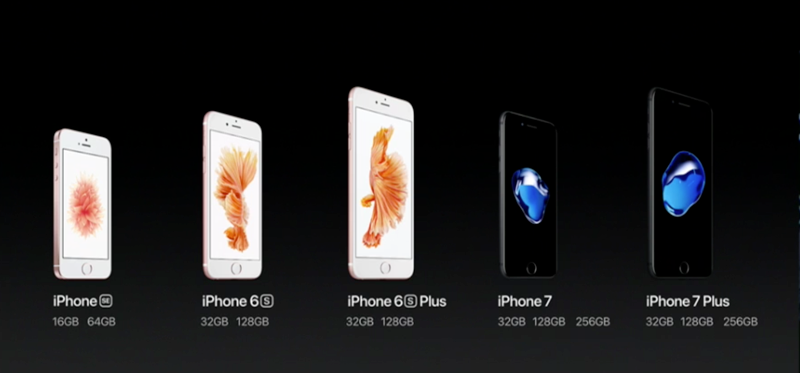
The iPhone 7 and iPhone 7 Plus are available in three capacities: 32GB, 128GB and 256GB. Previous iPhone models have been available in beginning in 16GB, then 64GB and 128GB, making the 256GB model the largest capacity iPhone ever, matching the capacity of the iPad Pro and exceeding that of some MacBook Pro computers!
Price
Pricing for the iPhone 7 and iPhone 7 Plus will be as follows:
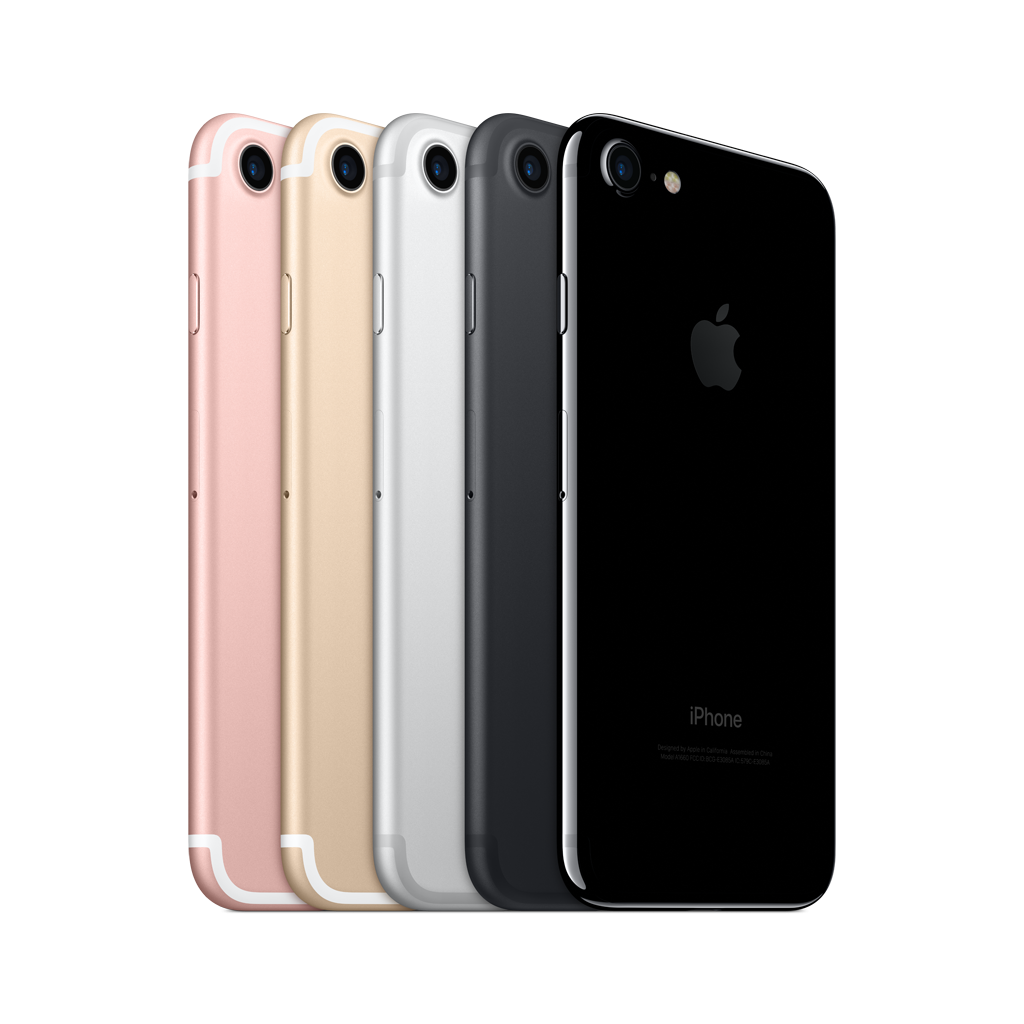
iPhone 7
-
32GB: $24/mo Verizon Device Payment
($649.00 retail) -
128GB: $31/mo Verizon Device Payment
($749.00 retail) -
256GB: $35/mo Verizon Device Payment
( $849.00 retail)
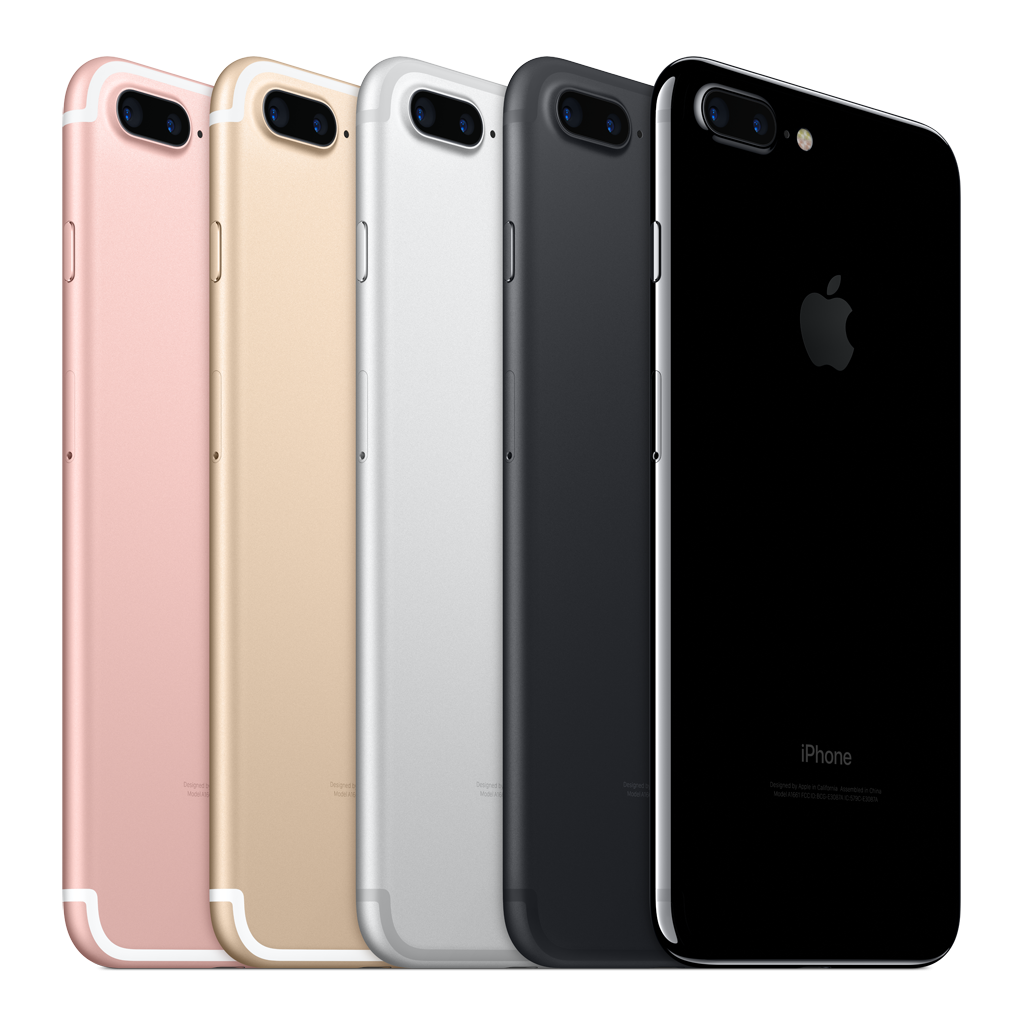
iPhone 7 Plus
-
32GB: $32/mo Verizon Device Payment
($769.00 retail) -
128GB: $36/mo Verizon Device Payment
($869.00 retail) -
256GB: $40/mo Verizon Device Payment
($969.00 retail)
The iPhone 7 and iPhone 7 Plus arrive on September 16th, preorder today at your local CityMac location to get yours first. Not sure which one is right for you? Check out our guide to choosing the right capacity for more details, or stop by to speak one on one with a CityMac Apple Product Professionals to get all of your questions answered. We will continue to update you as we find out more about the iPhone 7. Stay tuned to the CityMac blog for all the latest details.